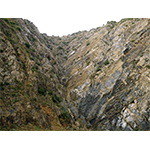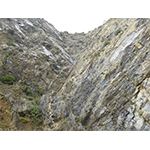Quarries of San Giuliano
The names of Mount San Giuliano or Mount Pisano not only indicate the mountain located between the eastern valley of the Serchio and the Pisan lower Val d’Arno, but also the entire mountain range that extends between the Serchio, the former Lake Bientina and the canals of Serezza, and between the River Arno and the canals of the Ozzeri and Rogio.
Mount San Giuliano is formed by three types of sedimentary rock, which are varyingly extracted and utilised as building material: "macigno" (calcareous sandstone), a rubble (breccia) for grinders known as "verrucano", and "calcare" (limestone). A sedimentary sandstone with clayey calcareous cement, and bluish grey in colour, macigno covers the area of the mountain chain that extends along the Serchio; verrucano, which owes its name to Mount Verruca, consists of a mass of fragmentary rocks composed of siliceous sandstone and slate, which covers most of Mount San Giuliano, from the centre to the right bank of the Arno, also extending to the eastern part up to the former Lake Bientina. The greatest concentration of calcare is found in the area of the mountain chain that extends southeast of Bagni di San Giuliano, from Monte delle Fate to the stone quarries for making lime in the vicinity of Caldaccoli.
Particularly spectacular is the recovery of the north-eastern quarry where an amphitheatre for cultural activities has been constructed.
****************************
Texts by Anna Toscano
English translation by Victor Beard
Last update 26/gen/2008





